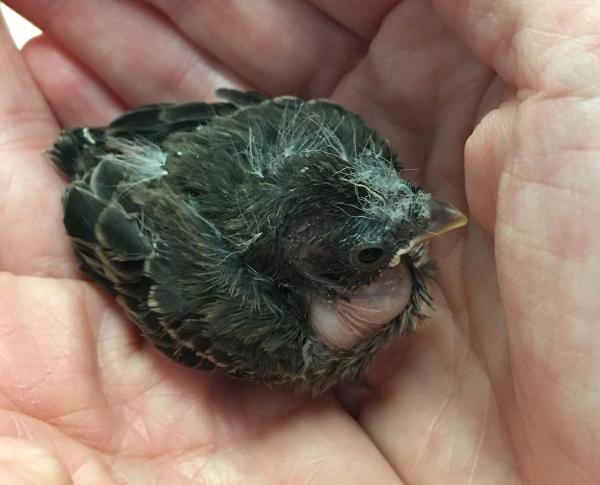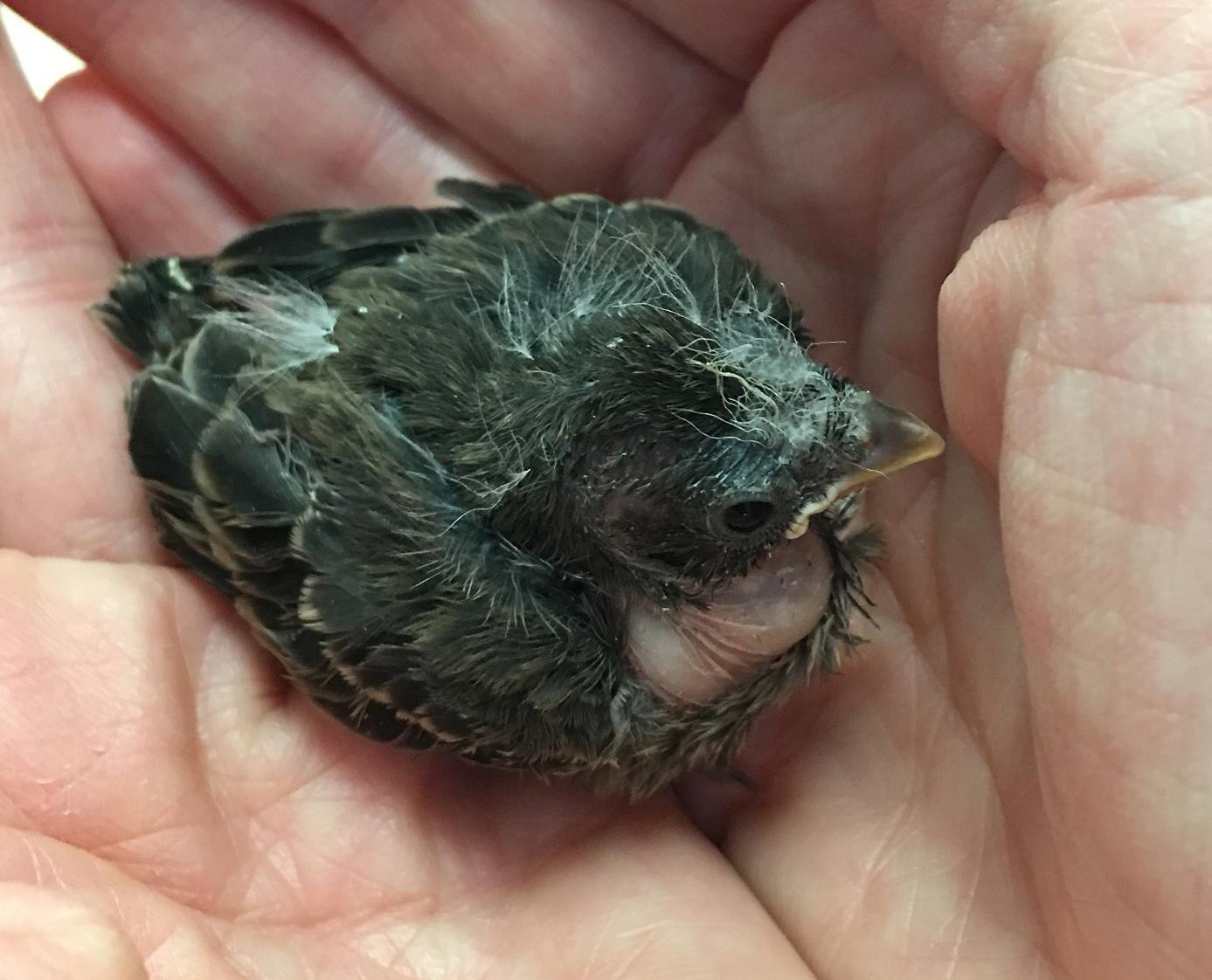Can You Keep Sparrows in Cages?


With their small and sociable nature, sparrows have become a charming presence in both countryside and urban landscapes across the world. Their distinctive chirping and adaptability to human environments make them endearing to birdwatchers and nature enthusiasts. However, as their popularity increases the question remains: Can sparrows be kept as pets, and if so, can they truly thrive in captivity?
In this AnimalWised article, we delve into the question of whether sparrows can be kept in cages and examine the potential consequences of doing so.
When and how did sparrows become pets?
The house sparrow (Passer domesticus) was intentionally introduced to various regions worldwide in the past. Originally native to Asia, Europe, and North Africa, this species successfully established populations in North and South America, South Africa, and Oceania over the years.
During the 19th and early 20th centuries, sparrows were considered beneficial birds for agriculture. Many agricultural communities believed that they could help control insect populations, protecting crops and increasing agricultural productivity. As a result, authorities in different countries introduced sparrows to new regions in the past to address pest problems and promote agricultural growth.
Additionally, sparrows proved to be highly adaptable birds, thriving in urban environments in the past. Their ability to coexist with humans, coupled with their resilience, made them attractive candidates for introduction to cities and towns. In the past, the presence of sparrows in urban areas was seen as positive, adding a touch of nature and being relatively harmless compared to some other bird species.
This urban coexistence in the past fostered familiarity with sparrows among city dwellers, and their charming appearance, cheerful chirping, and easy accessibility in urban spaces further endeared them to people. As urban life distanced individuals from direct agricultural practices in the past, sparrows' reputation shifted from being agricultural allies to beloved urban companions.
The accessibility of sparrows in urban areas in the past also led to an increased interest in keeping them as pets.
Can sparrows adapt to cages?
Yes, a sparrow can technically live in a cage. However, it is essential to consider the well-being and ethical implications of keeping a wild bird in captivity. Sparrows are naturally wild birds, and their natural instincts revolve around flying and living in their natural habitat.
If a sparrow is raised from a very young age in captivity, it may adapt to living in a cage to some extent. However, even in such cases, providing opportunities for the sparrow to experience freedom outside the cage is crucial for its physical and psychological health.
On the other hand, capturing and confining adult sparrows, which have experienced life in the wild, can be highly stressful and detrimental to their overall well-being. Adult sparrows are accustomed to their natural freedom, and forcing them to live in captivity can lead to significant distress, depression, and even health problems.
Is it legal to have a sparrow at home?
The legality of keeping a sparrow at home varies depending on the country and its specific regulations concerning pet ownership. As of now, there are no countries that explicitly prohibit keeping sparrows as pets. Most species of sparrows, are classified as least concern by the International Union for Conservation of Nature (IUCN), except for a few vulnerable species like the Abd al-Kuri sparrow (Passer hemileucus) and the Italian sparrow (Passer italiae). Therefore, there are no major restrictions on owning sparrows.
However, it's essential to consider the potential consequences of keeping sparrows or any wild birds in captivity. In urban and agricultural areas, sparrows are sometimes seen as pests due to their seed consumption and the potential displacement of native bird species. Moreover, the accumulation of bird feces can create problems in some environments.
While there may not be specific regulations against keeping sparrows, it is crucial to take into account the ethical aspect of keeping wild birds in captivity. Sparrows are natural fliers, and confining them to cages can lead to significant stress and sadness. For this reason, it is generally discouraged to keep adult sparrows in captivity, as it can ultimately be an act of cruelty. Flight restriction can have severe consequences on their well-being, and captured adult sparrows may not thrive in captivity and may even die.
Can sparrows die in captivity?
Sparrows may die in captivity for several reasons, primarily related to the challenges they face when removed from their natural habitat and placed in an artificial environment. Here are some common reasons why sparrows may not thrive in captivity and may experience a decline in health or even die:
- Stress: sparrows are highly social birds that thrive in flocks and are accustomed to a certain way of life in the wild. Being captured and confined to a small cage can lead to significant stress and anxiety for these birds, which can weaken their immune systems and make them more susceptible to diseases.
- Lack of freedom: Sparrows are natural fliers and are meant to have the freedom to fly and explore vast areas in the wild. In captivity, their movement is severely restricted, leading to physical and psychological issues. The inability to engage in natural behaviors like flying and foraging can lead to boredom and frustration.
- Dietary issues: captive sparrows may not receive a nutritionally balanced diet similar to what they would find in their natural environment. Improper diets can lead to malnutrition and health problems over time.
- Inadequate space: sparrows require ample space to fly and move around comfortably. A small cage may not provide enough room for exercise, leading to muscle atrophy and reduced fitness.
- Lack of social interaction: sparrows are social birds and thrive in the company of others. Isolating them in captivity can lead to loneliness and emotional distress.
- Unfamiliar surroundings: being taken from their familiar environment and placed in an artificial one can cause significant stress for sparrows. They may struggle to adapt to the new conditions, impacting their health.
Please make sure to read our other article, where we provide a more comprehensive guide on how to properly care for a house sparrow.

What to do if you find a baby or injured sparrow?
If you find a baby or injured sparrow, it's essential to take immediate action to ensure its safety and well-being. Observe the sparrow from a safe distance to determine if it is a baby or injured adult. Baby sparrows will have a less developed appearance with fluffy feathers, while adults will have a more mature and sleek appearance.
Furthermore, avoid touching or handling the sparrow unless necessary, as wild birds can become stressed by human contact and may injure themselves further.
What to do if you find a baby sparrow
If you find a baby sparrow that appears uninjured and has feathers but cannot yet fly, check for nearby nests.
If you locate a nest, carefully place the baby back inside. It is a common myth that touching a baby bird will cause the parents to reject it; in reality, most birds have a weak sense of smell and will continue to care for their young if returned to the nest.
If you cannot find the nest or it is unreachable, you can create a makeshift nest using a small box or container lined with tissues or dry grass. Place the baby sparrow in the nest and hang it near where you found the bird, preferably in a sheltered area out of direct sunlight.
Keep an eye on the nest from a distance to see if the parents return to care for the baby. If the parents do not return after a few hours or if the baby appears injured, contact a local wildlife rehabilitator or animal rescue center for assistance.
What do if you find an injured adult sparrow
- Approach an injured adult sparrow with caution, as it may be frightened and may try to escape or defend itself. Use a towel or cloth to gently cover the bird to prevent it from flying away or injuring itself further.
- Place the covered sparrow in a secure and well-ventilated box with a lid. Make sure there are air holes in the box to provide adequate ventilation.
- Keep the bird in a quiet and warm area away from any pets or disturbances.
- Contact a licensed wildlife rehabilitator or local animal rescue center immediately to seek professional help. Do not attempt to treat the injured bird yourself, as wild birds have specific dietary and medical needs that require expert care.
Remember, wild birds are protected by law in many countries, and it is illegal to keep them as pets without proper permits. The best way to help a baby or injured sparrow is to seek professional assistance from qualified wildlife rehabilitators.
You might find this other article on the lifespan of sparrows interesting.

If you want to read similar articles to Can You Keep Sparrows in Cages?, we recommend you visit our Basic care category.
- Camfield, A. (2004). Passeridae . Animal Diversity Web. Available at: https://animaldiversity.org/accounts/Passeridae/
- IUCN (2023). The IUCN Red List of Threatened Species. Version 2022-2. Available at: https://www.iucnredlist.org







